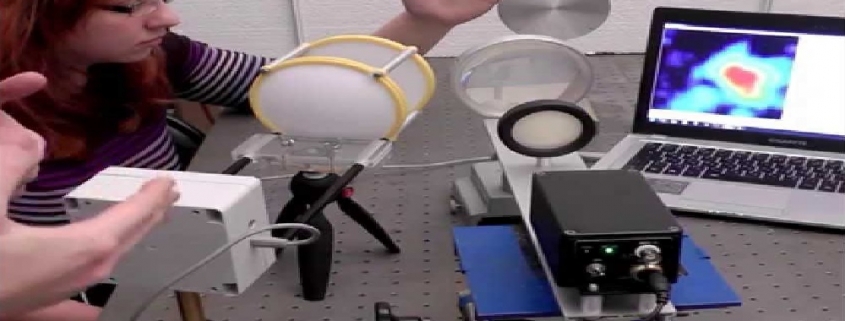Security and Imaging sectors will drive the market for Terahertz technology
The global terahertz technology market is projected to grow at a CAGR of 25.83% to reach US$1,670.976 million by 2027, from US$334.634 million in 2020.
Terahertz technology is a new and rapidly evolving subject with applications ranging from airport passenger scanning to huge digital data transmission. The terahertz (THz) frequency range (0.1 THz – 3 THz) is the last portion of the electromagnetic wave spectrum that has not been technologically or commercially exploited. As a result, the terahertz frequency range is frequently referred to in the literature as a terahertz gap. At the same time, it is well understood that this frequency range holds exciting prospects for a wide range of applications. The growing demand for effective solutions to handle security systems across numerous industries, rising investments in the defence and security sectors of various countries, and expanding demand for security screening equipment across various public areas are all contributing to market expansion.
Terahertz technology implementation in the pharmaceutical sector
The increasing implementation of this technology in the pharmaceutical sector is likely to fuel the market growth during the forecast period. In the pharmaceutical industry, this technique is used to verify coating integrity, identify chemical and physical structures, and detect contaminants. Furthermore, rising demand for compact and energy-efficient transceivers increased penetration of terahertz technology in the medical science and biology fields, and rising applications of high-end terahertz devices in research laboratories and monitoring processes will all contribute significantly to market growth during the forecast period. For instance, using terahertz (THz) waves, Korean researchers created a technique to detect Covid-19 variations in February 2022. The biomarker detection system employs a very sensitive, label-free THz metamaterial core to detect the protein unit, which plays an important role in viral penetration without altering the virus’s characteristics. Although PCR testing is highly accurate, the results take more than four hours to obtain. Rapid antigen testing gets answers in 20 minutes or less, but their accuracy is low. This approach can help to compensate for the drawbacks of traditional PCR tests and fast antigen assays.
Terahertz technology is being used for security in a variety of industries
Terahertz has numerous applications due to its imaging capabilities. It can be used in airports and other facilities to identify hidden weapons and packaging components as a safer, more accurate safety measure than X-rays. Terahertz radiation shows the spectrum properties of numerous materials, offering spectroscopic and other unique identifying information used for chemical analysis, pharmaceuticals, and explosives detection. The ability to perform partial or full-body screening and other security operations without exposing vital structures to radiation is one of the key drivers driving the development of terahertz technology in the security industry. The method is gaining popularity in the airport screening business, where it can help improve screening throughput while also offering high-quality detection. However, building devices to detect and generate images from terahertz waves has proven difficult, with most contemporary terahertz devices being expensive, slow, and massive, requiring vacuum systems and extremely low temperatures. For instance, MIT, the University of Minnesota, and Samsung researchers in November 2022 created a new type of camera that can detect terahertz pulses quickly, with high sensitivity, and at room temperature and pressure. The device is more sensitive and faster than earlier models, and it might be utilized for industrial inspection, airport security, and communications.
By end-user, the healthcare industry has greatly benefited from the application of terahertz technology
Terahertz technology is increasingly being used in the healthcare industry for a variety of purposes, including biomedical imaging, terahertz imaging, and spectroscopy. The first stage in making significant strides in establishing the technology in the healthcare industry, which is driving the market expansion, was the replacement of traditional x-rays and infrared rays with terahertz rays. For instance, Tihive, a terahertz imaging business, received €8.6 million from the European Innovation Council’s Accelerator program in September 2020 to help scale up its industrial inspection technology. Tihive’s terahertz imaging technology is intended for real-time quality control inspection. The company, headquartered in Grenoble, France, focuses on the hygiene and personal care areas. The company’s method is being used to track the amount of super-absorbent polymer (SAP) placed on diapers on lines capable of producing up to 1,200 diapers per minute. SAP is the absorbent substance that is used in diapers. The inspection system keeps track of how much SAP is deposited and dispersed. Other irregularities that can be identified include high humidity and the presence of pollutants such as oil, small pieces of metal, and insects.
The defence sector is using terahertz technology for communication and target detection
The increased need for terahertz technology in defence-related applications is one of the primary factors driving the market growth. Terahertz sensors are utilized in a wide range of military applications, including intelligence, surveillance, and reconnaissance (ISR), identification of isolated troops behind enemy lines, and terminal guidance of precise weapons. As governments throughout the world place a greater emphasis on detecting hidden explosives, terahertz technology is in high demand in security and defence applications. For example, in January 2022, Chinese scientists created 6G technology for hypersonic weapons communication and tracking, addressing some of the blackout issues that occur at speeds five times the speed of sound or faster. Their laser technology is capable of producing continuous electromagnetic waves in the terahertz spectrum, which is employed in next-generation communications.
Covid Insights
The COVID-19 pandemic has made it difficult for the worldwide terahertz technology market to reach its full potential. The virus’s vigorous breakout and exponential spread over the world sparked severe worries. Governments implemented nationwide lockdowns to contain the epidemic. Security, automotive, ceramic, and wood industries saw a drop in operations due to physical shutdowns and international trade obstacles, resulting in a drop in market demand for the technology. However, a promising demand was identified in the food, pharmaceutical, science, and medicine industries. Nonetheless, the market increased at a slower rate than expected.



